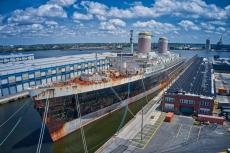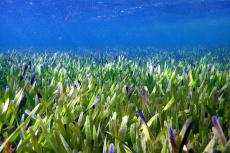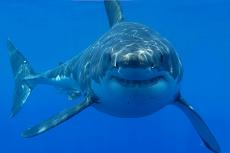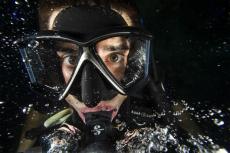Dynamic Nord TR-80 DIN Regulator Review
Sometimes, you can get a feeling for a product just by holding it in your hand, and that was the case here. And the feeling was good...
Dynamic Nord’s TR-80 regulator is the “top of the line” in Dynamic Nord’s regulator series of three different models. Dynamic Nord’s regulators are fairly new to the diving market, and I have never dived with them before. When I unpacked them from the box, I got a sense of quality from how they were made and the choice of materials.
I usually dive in cold water, where one appreciates a little weight in the first stage, as it increases the possibility for the first stage to be “heated” by the surrounding water, which reduces the risk of freezing. A large surface area of the first stage is also an advantage. This first stage was equipped with cooling fins, which, together with the weight/mass of the first stage, gave me the feeling that this was a regulator that would work even in cold water. The second stage was also equipped with two cooling fins right where the pressure drop occurs, and the risk of freezing is greatest.
This weight can be a negative for those who travel a lot and need a light regulator for warm water. Then, you should probably look at the CS-30 model instead.
Dry sealing and balanced
Another detail that makes me think this will be a reliable regulator (even in cold water) is that it is made with a so-called “dry sealing/permanent anti-freeze” construction. You can tell this by the black rubber membrane at the top of the first stage. It prevents water from reaching the spring inside. This is good because ice crystals can form around the spring when diving in cold water, which can cause it to seize up. This can happen even at 10°C above zero (50°F) or at high flows through the regulator, for example, if you accidentally free-flow with the purge button.
So, this diaphragm prevents ambient water from reaching the spring but allows the ambient pressure to affect the attachment of the spring, which is necessary because the first stage is a so-called balanced first stage. A balanced first stage adjusts the gas flow so that it is the same regardless of the dive depth. A first stage of this high quality should be balanced to provide plenty of air even at greater depths.
The first stage
It is equipped with a high-pressure gauge port and two low-pressure ports (inflator and second stage) on each side of the first stage. This makes it suitable for both single and double cylinders. I have dived with the RT-80 in both single-cylinder and double-pack configurations, and the hose pull worked well in both configurations. The first stage is available with two different connection options: either with a yoke, which can handle cylinders up to 232 bar, or a DIN connection, which can handle cylinders up to 300 bar.
Second stage
It is available in yellow and black, like most other brands. With the yellow one, which is intended for use as a secondary second stage, the “octopus” is fitted with a 92cm long hose and lacks the personalised adjustment facility. Otherwise, it is equipped just like the primary second stage.
These second stages are, of course, also balanced and equipped with a Venturi knob. The Venturi knob means that by turning the knob on the second stage towards you, you can make it easier to breathe, i.e., the second stage has a lower breathing resistance. If you have the knob in the position away from you, as you should have, for example, on the octopus when you are not using it, it is, of course, possible to breathe in it (I know many people who have dived whole dives in this way), but it is perceived as having a slightly higher breathing resistance. The advantage is that the second stage does not free-flow as easily, for example, when you step into the water, scoot or accidentally hit it with your arm.
Adjustment breathing resistance
The second stage also has a knob for adjusting the breathing resistance. Every diver has a personal opinion about the “optimal” breathing resistance. Using the knob, you can easily find the best-personalised setting and thus get maximum breathing comfort without the second stage free-flowing.
The special design of the front prevents free floating of the second stage when diving in strong currents or when scooting (DPV).
The increased pressure (due to current or speed) cannot affect the inhalation diaphragm because the front has no openings at the front. The necessary inlets are located on the side, which makes the second stage insensitive to currents and the like. I have tried really hard to provoke a free-flow when snowmobiling, but I have not succeeded, which is good!
Comfort
The mouthpiece is made of anti-allergic silicone, and I found it sat well in my mouth even on longer dives. Then, it is individual what you think is a comfortable mouthpiece. The weight of the second stage was not something I noticed, so it should be quite neutrally balanced, and the hose pull from the first stage was good.
I found the breathing resistance, which is adjustable (see above), to be very easy to breathe. I had to increase the resistance a little because I found the resistance a little too light for my taste. It should be noted that I did not dive deeper than 40m with the regulator and only with air as breathing gas.
I find the Dynamic Nord TR-80 to be a stable and robust regulator that I think will make many divers happy in the future. As I wrote earlier, if you are looking for a lightweight and not freeze-protected regulator, you should probably not choose a TR-80 but look at the CS-30 instead. ■










































